Oil paintings have been a significant medium in the art world for centuries. They have been used by many famous artists throughout history. In most of our history, paintings and artwork were the only source of visual events or images. In this post, I will list ten of the most famous oil paintings that will help you understand oil paint’s mark on the world.
One of the key advantages of oil painting is its slow-drying time. This allows artists to work on a painting over a longer period of time. This allows for greater precision and detail in the work, and can result in highly realistic and lifelike paintings.
This has made oil painting a popular medium for creating highly realistic and detailed portraits, landscapes, and still lifes, as well as various types of art.
Mona Lisa – Leonardo da Vinci
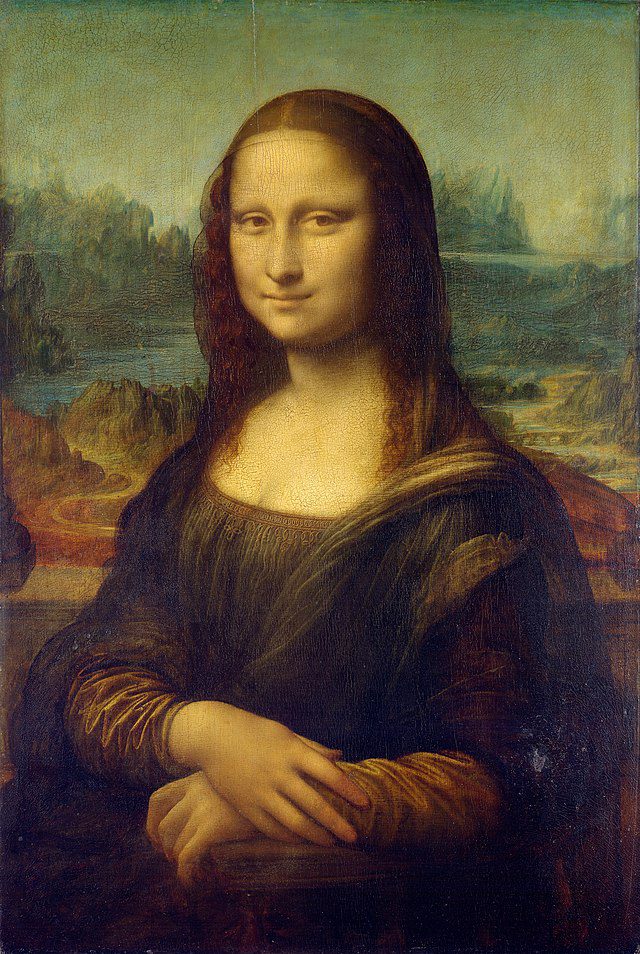
The Mona Lisa is a world-famous portrait painting created by the Italian Renaissance artist Leonardo da Vinci, who is one of the most famous renaissance painters. It is believed to have been painted between 1503 and 1506, and is one of the most valuable paintings in the world.
The subject of the painting is Lisa Gherardini, the wife of a Florentine merchant named Francesco del Giocondo. The painting is also known as La Gioconda, which is a reference to Lisa’s married name.
The painting was not immediately famous when it was create. It was not until the 19th century that it began to gain widespread recognition as a masterpiece of art. The painting’s fame increased after it was stolen from the Louvre Museum (where it is today) in Paris in 1911, and later recovered in Italy two years later.
Today, the Mona Lisa is considered a cultural icon and is widely recognized as one of the most important works of art in history. Its subtle use of light and shadow continue to captivate viewers and inspire artists and art lovers around the world.
The Starry Night – Vincent Van Gogh
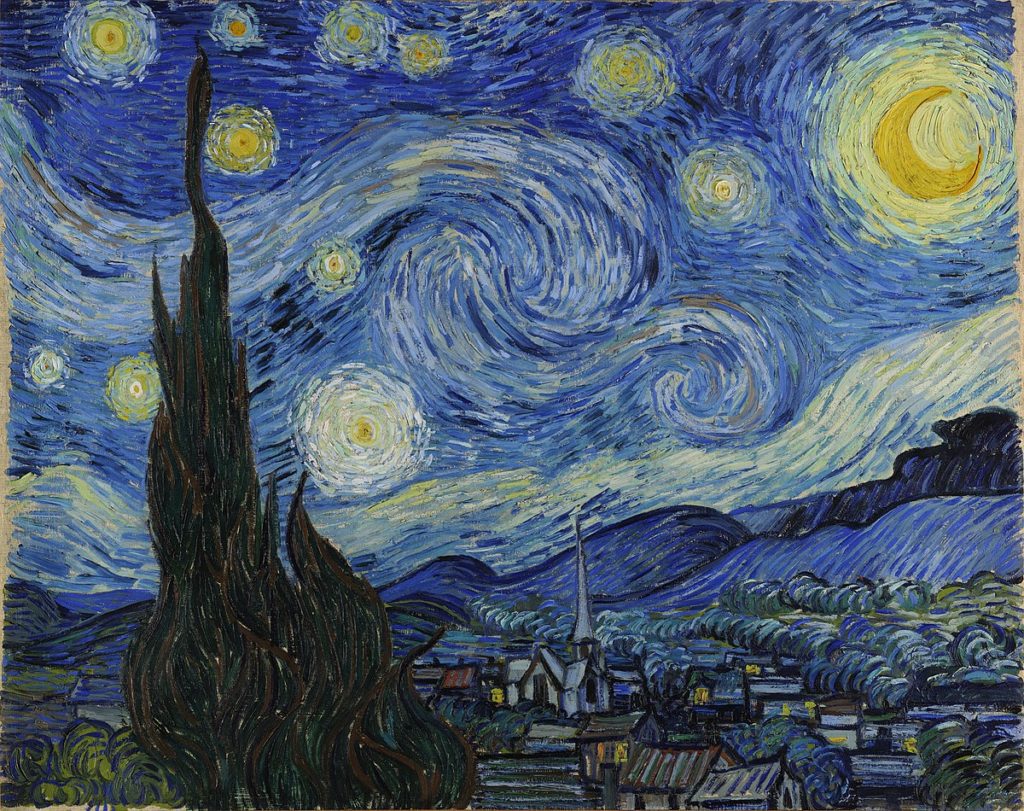
The Starry Night” is a famous oil painting by Dutch post-impressionist artist Vincent van Gogh. It was painted in 1889 while Van Gogh was staying at the Saint-Paul-de-Mausole asylum in Saint-Rémy-de-Provence, France. The painting depicts the view from the window of Van Gogh’s room at the asylum, with a stylized village and a starry night sky.
The painting is famous for its bold use of color and texture, and for its swirling, expressive lines that give the impression of movement and energy. “The Starry Night” is widely regarded as one of Van Gogh’s most famous and beloved works. It has become an iconic image in popular culture.
The painting has been reproduced in countless forms, including posters, prints, and even on clothing and accessories. It is also a popular subject of study for art historians and art lovers alike. Today, the painting is housed at the Museum of Modern Art in New York City.
The Persistence of Memory – Salvador Dali
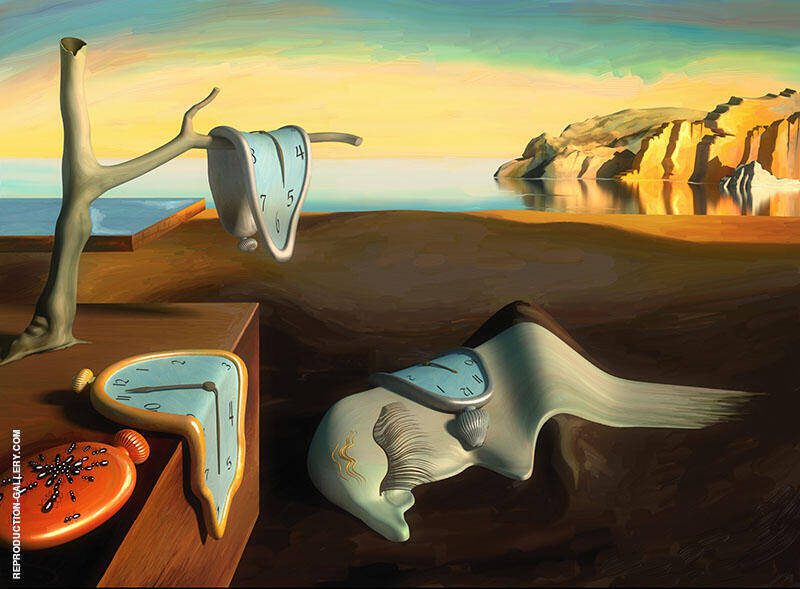
“The Persistence of Memory” was completed in 1931 and is widely regarded as one of Dalí’s most famous works and an iconic piece of surrealist art. The painting’s scene is bathed in a dream-like, hazy light.
The painting was created during a time when Dalí was experimenting with the concept of “softness” and its representation in art. He was influenced by the work of Sigmund Freud and his ideas about the subconscious mind and the interpretation of dreams.
The painting was first exhibited at the Julien Levy Gallery in New York in 1932. It quickly gained popularity among art critics and the public. The Persistence of Memory has since become a symbol of Surrealism, and is often cited as one of the most recognizable works of 20th-century art.
In addition, The Persistence of Memory has also been interpreted in various ways. Some critics have seen it as a commentary on the fleeting nature of time and the impermanence of human life. Others have interpreted it as a representation of the relativity of time and space.
Today, The Persistence of Memory is housed in the Museum of Modern Art in New York City and remains one of the most popular works of art of the 20th century.
The Scream – Edward Munch
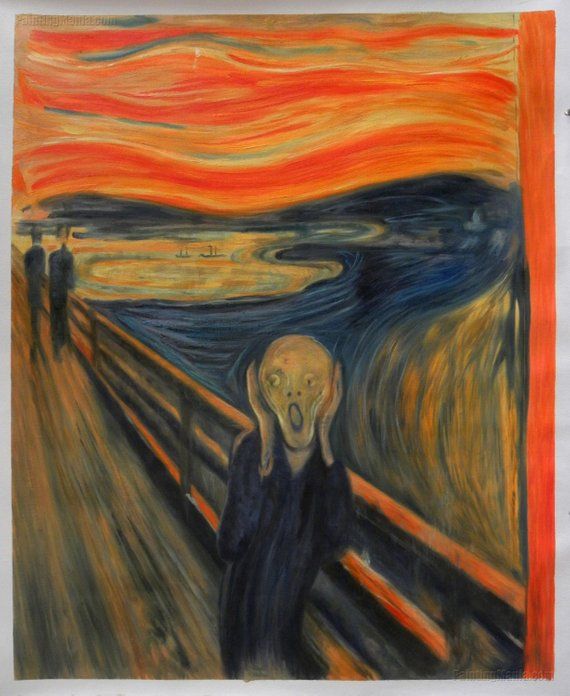
“The Scream” is a painting by the Norwegian artist Edvard Munch, created in 1893. It is a highly recognizable and iconic work of art, known for its powerful emotional expression and vivid use of color.
The painting depicts a figure standing on a bridge, with their head thrown back and their hands covering their ears. The background of the painting features a swirling, tumultuous sky and a fjord in the distance. Munch created several versions of “The Scream,” including two paintings and two pastel drawings.
The most famous version is the painting housed in the National Gallery in Oslo, Norway.
“The Scream” was initially met with mixed reviews and was not immediately recognized as a masterpiece. However, it has become one of the most famous and celebrated works of art in the world. It is widely regarded as a symbol of modern angst and alienation.
“The Scream” has also been interpreted in various ways. Some critics have seen it as a representation of the human condition. However, others have interpreted it as a commentary on societal issues such as industrialization and urbanization.
The Night Watch – Rembrandt van Rijn
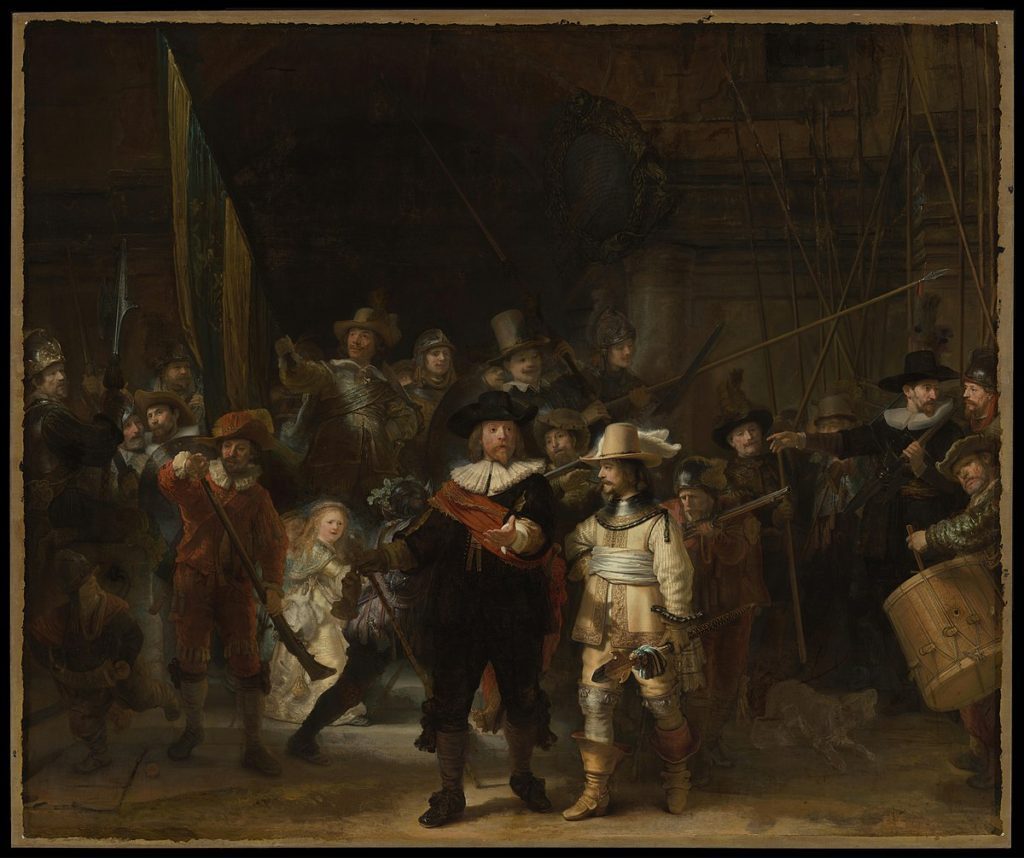
“The Night Watch” is a painting by the Dutch artist Rembrandt van Rijn, created in 1642. It is one of his most famous works and is widely regarded as a masterpiece of Baroque art.
The painting depicts a group of 18 members of a civic guard, a type of military organization that existed in the Netherlands during the 17th century. Figures in the painting are shown in a dynamic with the captain of the guard, Frans Banninck Cocq, in the center.
“The Night Watch” is known for its Baroque style, with the figures illuminated by a shaft of light coming from the left-hand side of the painting. The background of the painting features a variety of details, including a dog and a drummer, as well as other members of the guard in the distance.
It was created during a time of political and social upheaval in the Netherlands. It was intended to celebrate the unity and strength of the Dutch people. However, the painting was met with mixed reviews when it was first exhibited. Some critics find it too chaotic and disorganized.
Over time, “The Night Watch” has become one of the most celebrated and iconic works of art in the world. It is widely regarded as a symbol of Dutch culture and identity. The painting has been interpreted in a variety of ways. Some critics see it as a representation of the power of collective action, and others interpreting it as a commentary on the nature of leadership and authority.
Today, “The Night Watch” is housed in the Rijksmuseum in Amsterdam, and remains one of the most popular and beloved works of art in the world.
Guernica – Pablo Picasso

“Guernica” is a painting by the Spanish artist Pablo Picasso, created in 1937. It is widely regarded as one of the most powerful and iconic anti-war paintings in history.
The painting depicts the bombing of the town of Guernica during the Spanish Civil War, which occurred on April 26, 1937. It features a variety of distorted and anguished figures, including a horse and a bull, as well as human figures in agony. The painting is predominantly black and white, with occasional splashes of color.
Picasso created the painting in response to the bombing, which was carried out by German and Italian warplanes at the behest of the Spanish Nationalist forces. The painting was intended as a protest against the horrors of war and the suffering it causes.
“Guernica” was first exhibited at the Spanish Pavilion of the Paris World’s Fair in 1937, and it quickly gained worldwide attention. The painting was widely reproduced and became a symbol of anti-war sentiment around the world. Today, “Guernica” is housed in the Museo Nacional Centro de Arte Reina Sofía in Madrid.
The Last Supper – Leonardo da Vinci

“The Last Supper” is a mural painting by the Italian artist Leonardo da Vinci, created between 1495 and 1498. The painting is one of the most famous and iconic representations of the biblical event of the Last Supper.
The painting depicts Jesus Christ and his 12 apostles at the moment when Jesus announces that one of them will betray him. Each of the figures is shown in a unique and expressive pose, with their faces and body language conveying a range of emotions and reactions to the news.
It is notable for its use of perspective and composition. The figures are arranged in a series of diagonal lines that lead the viewer’s eye toward the center of the painting. Background space of the painting features a variety of architectural details, including a series of arches that echo the shape of the figures.
“The Last Supper” was painted on the wall of the refectory of the Convent of Santa Maria delle Grazie in Milan, Italy, and it remains in that location today. The painting has suffered significant damage over the centuries, and has undergone numerous restorations and repairs.
Despite its condition, “The Last Supper” remains one of the most celebrated and influential works of art in history. It has been the subject of countless interpretations, adaptations, and reproductions. The painting is widely regarded as a masterpiece of the Italian Renaissance, and a testament to the enduring power of religious art.
Les Demoiselles d’Avignon – Pablo Picasso
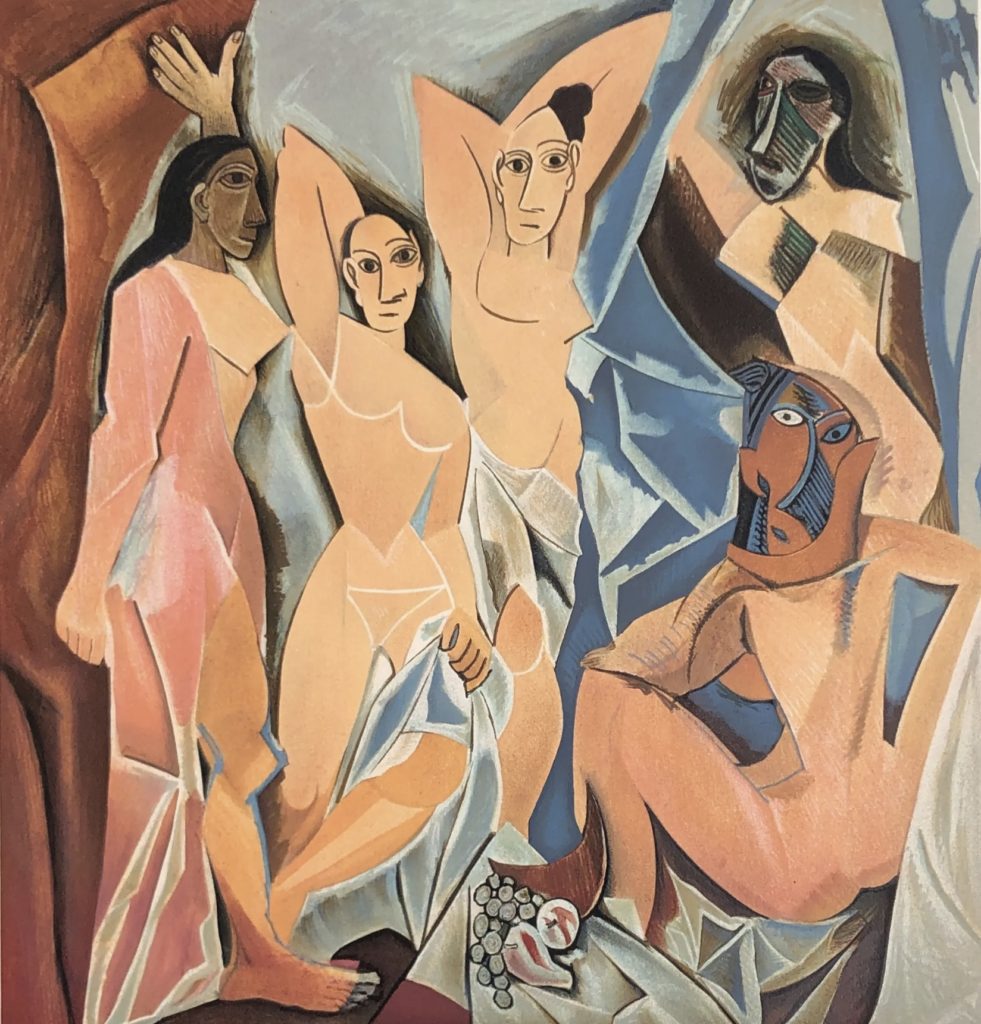
“Les Demoiselles d’Avignon” is a painting by the Spanish artist Pablo Picasso, created in 1907. It is widely regarded as one of the most important works in the development of modern art, and a key example of the Cubist movement.
The painting depicts five nude prostitutes in a brothel in the red-light district of Avignon, France. Figures are shown in a highly abstracted style, with sharp angles and fragmented forms that break away from traditional techniques.
The painting was highly controversial when it was first exhibited. Many critics found its subject matter and style to be shocking and offensive. However, the painting had a profound influence on the development of modern art, and is now widely regarded as a masterpiece of the 20th century.
“Les Demoiselles d’Avignon” is notable for its use of multiple perspectives and geometric forms. It allowed Picasso to explore new ways of representing the human form and the world around him. The painting was a major departure from traditional representational art. Also, it helped to pave the way for the development of new artistic movements such as Surrealism and Abstract Expressionism.
Today, “Les Demoiselles d’Avignon” is housed in the Museum of Modern Art in New York City, where it remains. The painting has been interpreted in a variety of ways, with some critics see it as commentary on exploitation of women. Others interpreting it as a celebration of the power of art to challenge and transform our perceptions of the world.
Water Lilies – Claude Monet

“Water Lilies” is a series of paintings by the French artist Claude Monet, created between 1899 and 1926. The paintings depict Monet’s flower garden at his home in Giverny, France, where he created a pond filled with water lilies.
The “Water Lilies” series consists of approximately 250 oil paintings. It is widely regarded as one of the most important and influential bodies of work in the history of Impressionist art. The paintings feature a variety of perspectives and compositions, with Monet experimenting with new techniques and styles.
The “Water Lilies” series was created during a period of personal and artistic transformation for Monet. Monet was grappling with the loss of his wife and son, as well as his own failing eyesight. Then, he turned to his garden as a source of solace and inspiration.
Today, many of the “Water Lilies” paintings are housed in major museums and galleries around the world. This includes the Musée de l’Orangerie in Paris, the Museum of Modern Art in New York City, and the Art Institute of Chicago. The paintings continue to inspire new generations of artists and art lovers today.
The Birth of Venus – Sandro Botticelli

“The Birth of Venus” is a painting by the Italian artist Sandro Botticelli, created in the mid-1480s. The painting depicts the goddess Venus rising from the sea.
It is widely regarded as one of the most iconic and influential works of the Italian Renaissance. It is a testament to the enduring power of classical mythology in Western art. Venus is shown in a highly idealized and stylized form that is graceful with a fluid pose that emphasizes her beauty.
“The Birth of Venus” was commissioned by the Florentine nobleman Lorenzo di Pierfrancesco de’ Medici. It was intended to adorn the walls of his villa in Castello. Botticelli uses a combination of classical motifs and contemporary techniques to create a work that is elegant and provocative.
Today, “The Birth of Venus” is housed in the Uffizi Gallery in Florence, Italy. The painting has been interpreted in a variety of ways. Some critics see it as a celebration of the beauty and power of female sexuality. Others see it as a more complex meditation on the relationship between art, myth, and culture.

Comments are closed.